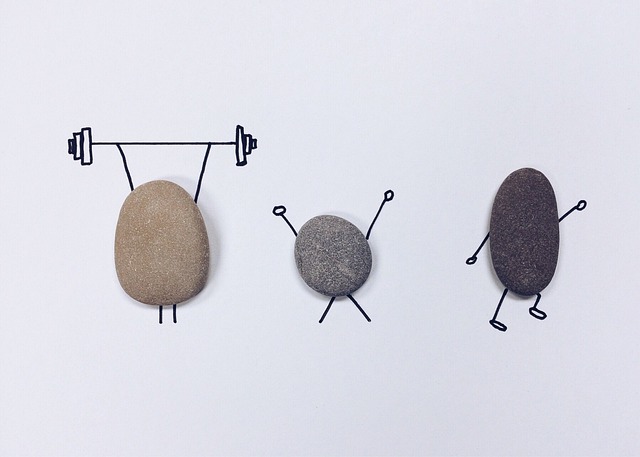Joint pain, caused by aging, injury, or conditions like arthritis, significantly impacts daily life. Physical therapy is an effective treatment, offering targeted exercises and techniques to strengthen muscles, improve flexibility, and enhance mobility, alleviating pain and restoring function. By addressing root causes and combining physical therapy with lifestyle modifications like exercise and diet, individuals can achieve long-lasting joint health and a more active lifestyle.
Joint pain is a prevalent issue, impacting mobility and daily life. This article explores effective lifestyle adjustments to prevent and reduce joint pain, offering valuable insights into maintaining joint health. We delve into understanding the causes and impact of this condition, highlighting the significance of physical therapy in managing it. Additionally, we provide strategies for creating a sustainable plan tailored to your needs, ensuring long-term joint pain relief. Discover practical steps to reclaim your comfort and flexibility.
- Understanding Joint Pain: Causes and Impact
- Lifestyle Modifications for Joint Health
- The Role of Physical Therapy in Managing Joint Pain
- Creating a Sustainable Plan for Joint Pain Relief
Understanding Joint Pain: Causes and Impact

Joint pain is a common issue that can significantly impact an individual’s daily life and overall well-being. Understanding its causes and effects is the first step in developing effective strategies to prevent and manage it. Joint pain can arise from various factors, including age-related wear and tear, injuries, inflammation, or underlying medical conditions like arthritis.
Physical therapy for joint pain plays a pivotal role in treatment. It involves specialized exercises and techniques tailored to strengthen surrounding muscles, improve flexibility, and enhance joint mobility. This approach not only reduces pain but also helps restore function, enabling individuals to resume their normal activities with less discomfort. By addressing the underlying causes, physical therapy offers long-lasting relief, promoting a healthier and more active lifestyle.
Lifestyle Modifications for Joint Health

Joint health is a crucial aspect often overlooked in our daily routines, yet it significantly impacts our overall well-being, especially as we age. Incorporating lifestyle modifications can be a game-changer in preventing and reducing joint pain, with physical therapy emerging as a powerful tool for managing and even reversing the effects of joint degeneration. Regular exercise tailored to strengthen muscles surrounding joints is a top recommendation from experts; this includes low-impact activities like swimming, cycling, or yoga, which improve flexibility and range of motion without putting excessive strain on joints.
Additionally, maintaining a healthy weight is vital to reducing joint stress. Even modest weight loss can significantly alleviate pressure on weight-bearing joints like knees and hips, making everyday activities more comfortable. Diet plays a supporting role too; incorporating anti-inflammatory foods rich in omega-3 fatty acids, antioxidants, and vitamins can help combat joint inflammation. These dietary changes, coupled with physical therapy sessions focusing on joint mobility and strengthening exercises, provide a comprehensive strategy to keep joints healthy and pain-free.
The Role of Physical Therapy in Managing Joint Pain

Physical therapy plays a pivotal role in managing and alleviating joint pain, offering a natural and effective approach to recovery. It involves a tailored set of exercises and techniques designed to improve joint mobility, strengthen surrounding muscles, and reduce inflammation. Physical therapists are experts in assessing individual needs and creating personalized treatment plans.
Through specific stretches and strengthening maneuvers, physical therapy can provide significant relief for various types of joint pain, including arthritis, injuries, and post-surgery conditions. The gentle yet targeted movements help restore range of motion, while manual therapy techniques can release tension and improve circulation in the affected areas. This holistic approach not only reduces pain but also empowers individuals with the knowledge and skills to maintain joint health long-term.
Creating a Sustainable Plan for Joint Pain Relief

Creating a sustainable plan for joint pain relief is essential for long-term comfort and mobility. It involves a combination of lifestyle changes, such as adopting a balanced diet rich in anti-inflammatory foods, staying hydrated, and incorporating regular low-impact exercises like swimming or yoga. These measures help reduce inflammation and strengthen the muscles that support your joints.
Physical therapy plays a crucial role here by providing tailored stretches and strengthening exercises designed to improve joint mobility and stability. A physical therapist can guide you on proper technique, ensuring that you’re performing movements safely and effectively. This holistic approach, integrating dietary adjustments, exercise, and professional guidance, offers a sustainable solution for managing and reducing joint pain.
Joint pain is a common struggle, but with the right lifestyle adjustments and professional guidance, it can be effectively managed. By incorporating beneficial habits and seeking support from specialists like physical therapists, individuals can significantly reduce pain and improve their overall joint health. Remember, a sustainable plan tailored to one’s needs is key to long-term relief, allowing folks to live active lives without discomfort. Consider these strategies as a holistic approach to managing joint pain and consult professionals for personalized advice, including exploring the benefits of physical therapy for joint pain relief.
